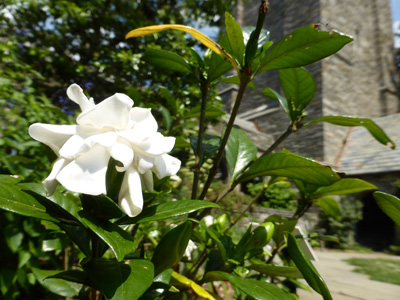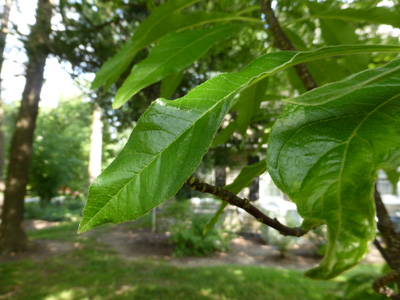Plants of the Week: June 30
Gardenia jasminoides ‘Chuck Hayes’ (Common Gardenia)
This gardenia is located in the Fragrance Garden, in Clothier Hall’s cloister, for good reason: its scent is almost overpowering in its sweetness. Between the fragrance, the lustrous foliage, and the creamy double blooms, ‘Chuck Hayes’ is nearly irresistible. Better yet, Michael Dirr reports it to be “possibly” hardy in Zone 6! Gardenias prefer acid, rich, moist (yet well-drained) soils and should be protected from winter’s chill.
Garden location: Fragrance Garden
Photo credit: A. Auner
Calocedrus decurrens (California incense-cedar)
The California incense-cedar exhibits a uniform, columnar form. Bright green foliage is arranged in vertical fans (similar to arborvitae) with an incense-like scent when the leaves are crushed. What strikes me most about this tree, however, is its bark. The large, distinct panels of bark range from rust-red to wintergreen in color—the effect is that of stained glass. California incense-cedars can reach 50 feet in height and can survive in poor soils, but should not be planted in windy spots. The pictured specimen lives in the Pinetum, near the railroad.
Garden location: Pinetum
Photo credit: A. Auner
Leitneria floridana (Florida corkwood)
This uncommon, March-blooming shrub is now proving its summer mettle behind Benjamin West House, near the Biostream, with its bright, lanceolate leaves and chocolate-brown stems with round lenticels. Florida corkwood’s suckering habit and height, which should not exceed 12 feet, makes it appropriate for adding interest and contrast under large trees. Leitneria can tolerate wet soils and winter temperatures well below those of its usual range.
Garden location: between the Biostream and Benjamin West House
Photo credit: A. Auner








No Comments